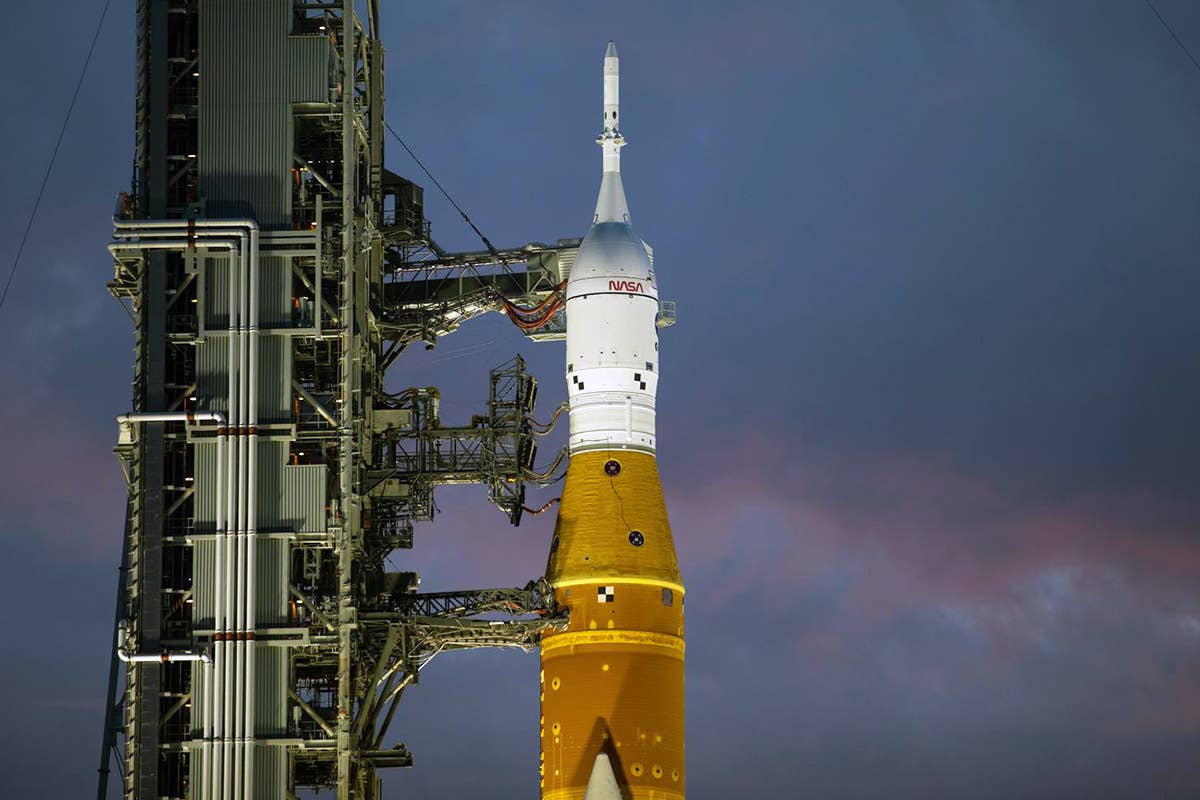NASA Delays Launch Window for SLS
The agency’s most powerful rocket is faced with yet another setback following issues found during its wet dress rehearsal.

A view of the Artemis I Space Launch System (SLS) and Orion spacecraft just before sunrise at Launch Complex 39B at NASA’s Kennedy Space Center in Florida. [File photo courtesy: NASA]
During a teleconference Monday, NASA announced that its Space Launch System (SLS) will return to the Vehicle Assembly Bay (VAB), where it will undergo troubleshooting for a faulty upper stage check valve, a liquid hydrogen leak, and gaseous nitrogen supply issues—scrubbing its early June launch window and instead pushing the target date to June 29 at the earliest.
“We had this issue with the [gaseous nitrogen] at the beginning of tanking, and then, maybe a little less known, we also had an issue during the drain operations—a very similar failure,” said Artemis launch director Charlie Blackwell-Thompson. “We had asked the team to go back and take a look at that, to help us understand our confidence going into wet dress run number four.”
The SLS wet dress rehearsal is designed to give the rocket—and its engineers—an opportunity to simulate launch-day operations. NASA ran into issues on multiple occasions, forcing the agency to halt the rehearsal. It is unclear when the next attempt will be made.
“It’s a very delicate dance in order to bring a rocket alive,” said Tom Whitmeyer, deputy associate administrator for common exploration systems development. “It’s a really complicated thing to do. We’re putting the pieces of the puzzle together, I think we figured out a few more pieces Thursday, but we got a few more pieces in front of us.”
Unlike launches to low-earth orbit (LEO), the SLS’s trip to the moon takes extremely precise timing.
The Sun, Earth, and moon must be within a certain alignment to achieve a lunar trajectory, which allows the Orion spacecraft to receive sunlight for heat and power.
“Our spacecraft loves sunlight because it is a power source through the solar array wings,” said Artemis mission manager Mike Sarafin. “Then also, it keeps it warm enough from a thermal standpoint, that we can fly into the deep space environment where you don’t really have much radiant heating.”
NASA is expected to provide more updates on the SLS in the coming weeks.

Sign-up for newsletters & special offers!
Get the latest FLYING stories & special offers delivered directly to your inbox






